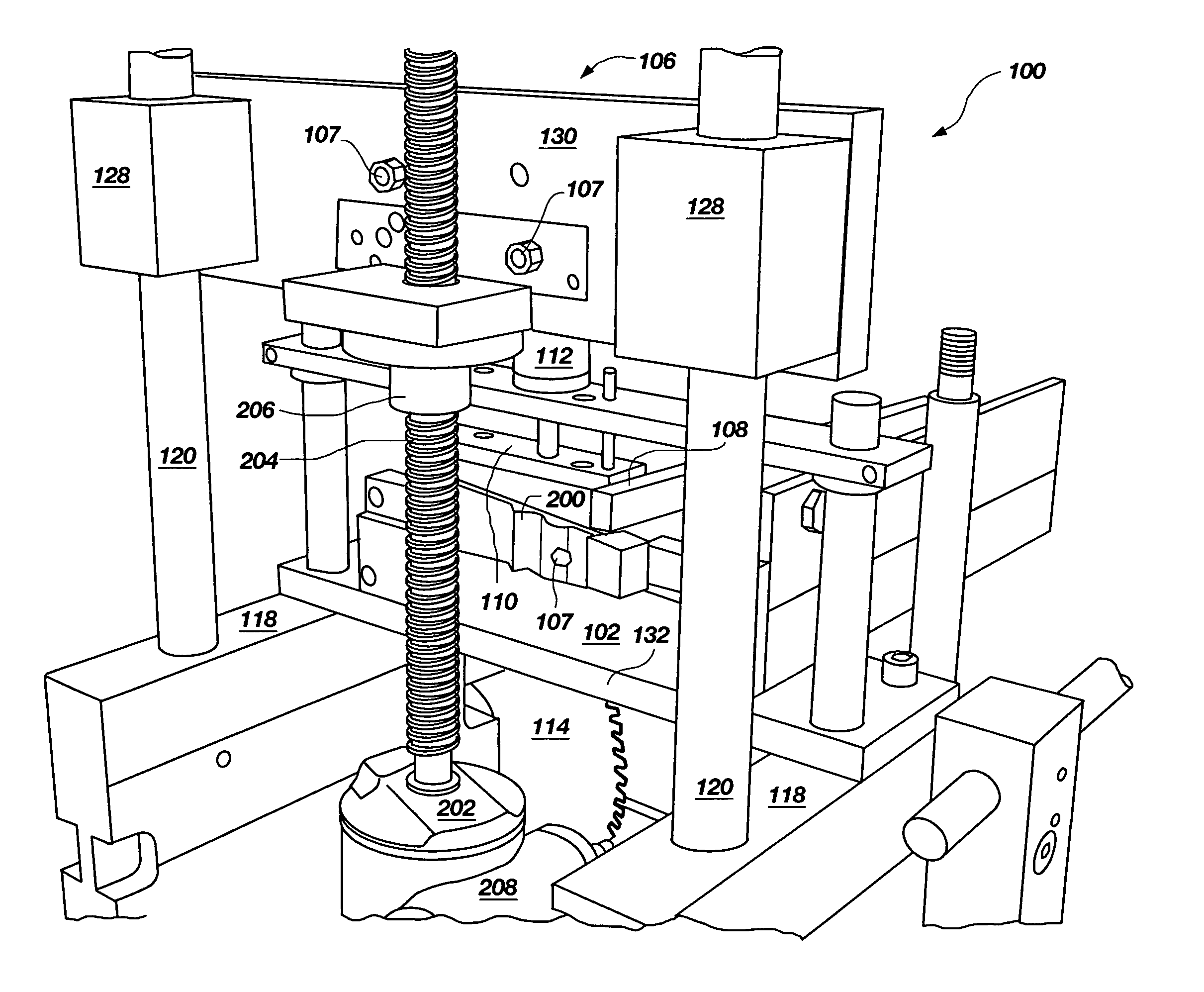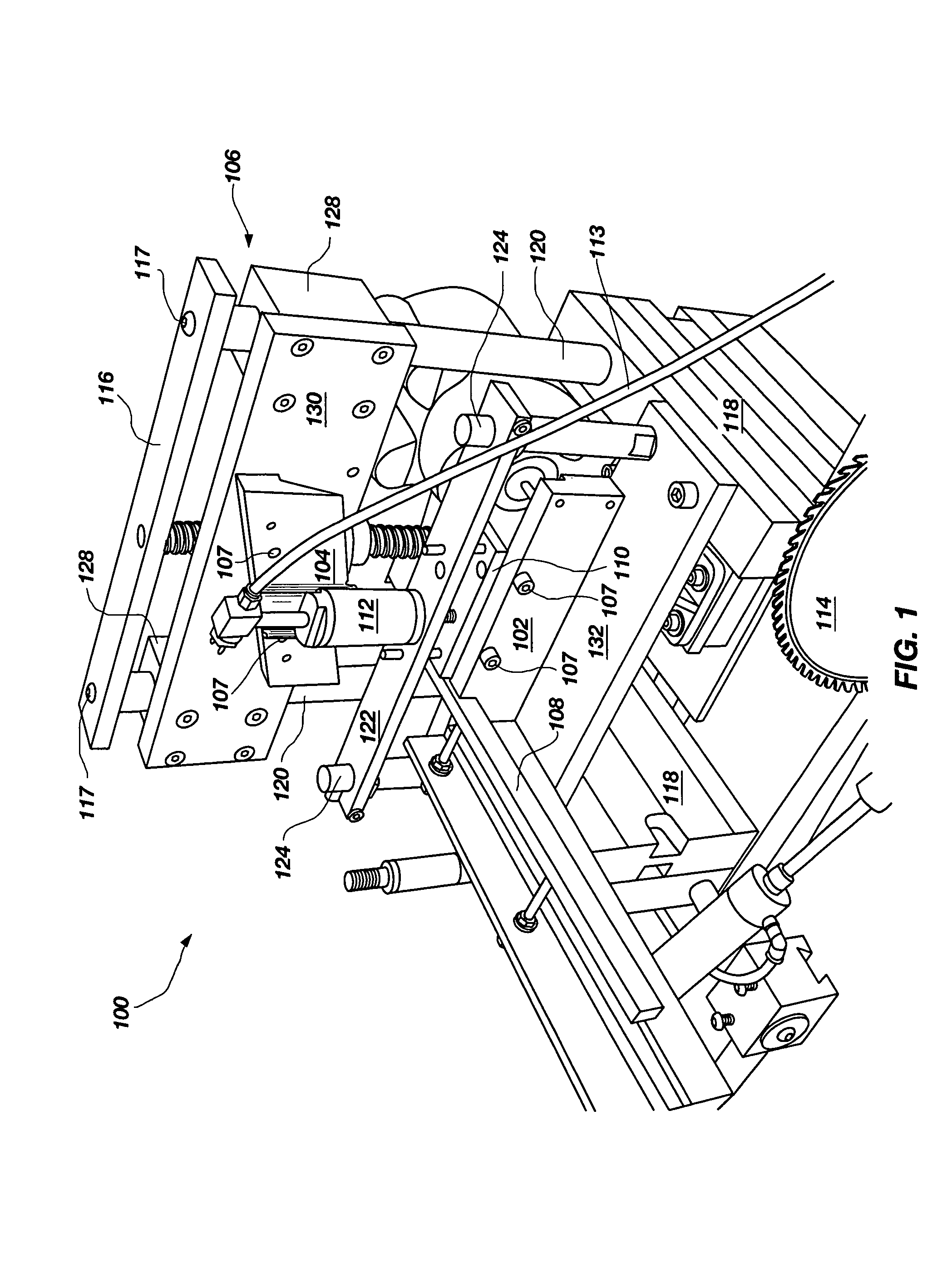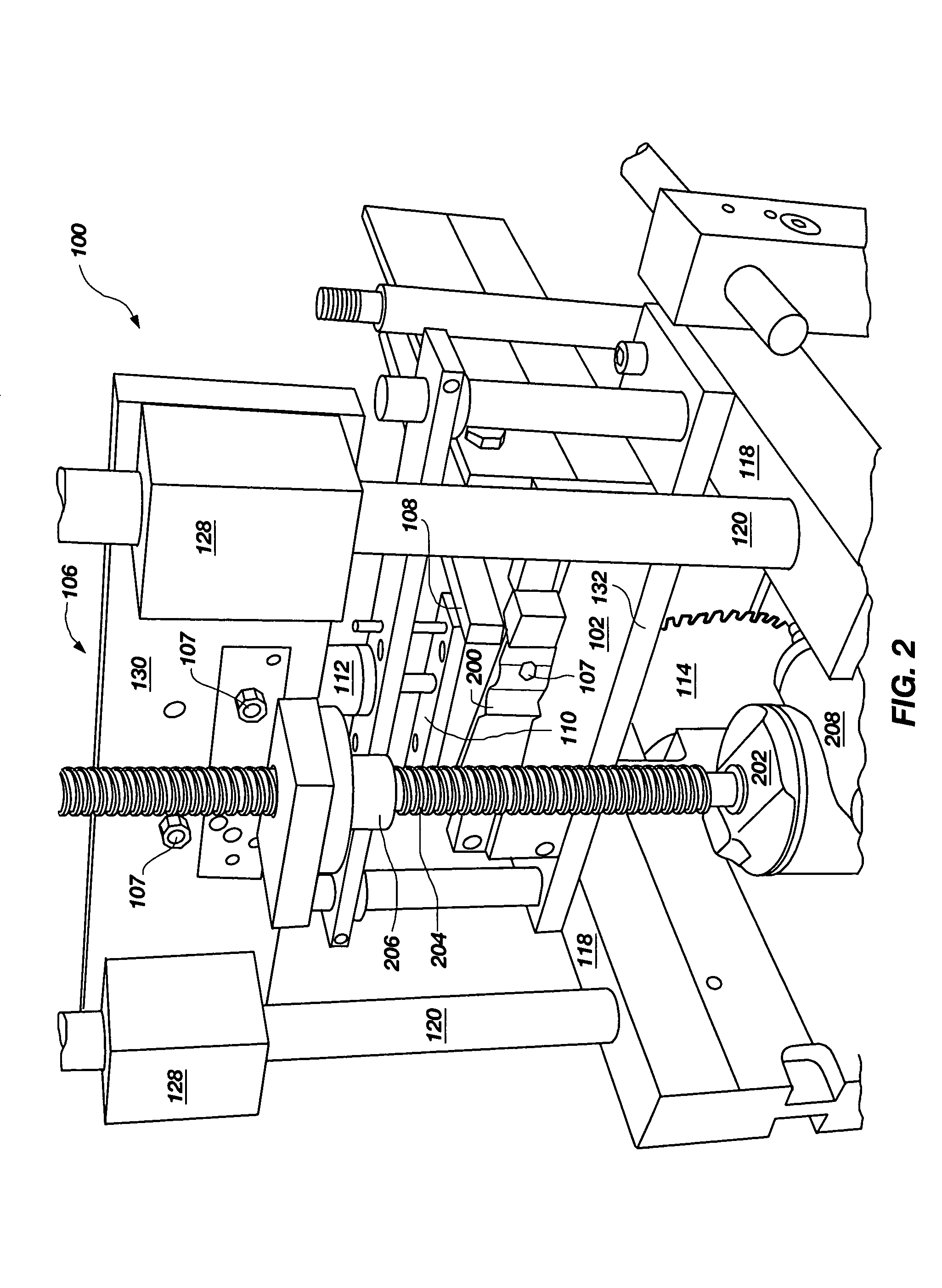Coping apparatus and method of operation
a coping and coping technology, applied in the direction of sawing apparatus, sawing, sawing with straps, etc., can solve the problems of unsightly gaps, tedious and imprecise process, and not preferred miter joints
- Summary
- Abstract
- Description
- Claims
- Application Information
AI Technical Summary
Benefits of technology
Problems solved by technology
Method used
Image
Examples
Embodiment Construction
[0024]Embodiments of the present invention include a coping apparatus and method of operation that automates the process of forming coped butt joints for molding placed on internal wall angles that alleviates at least some of the problems associated with the use of miter joints or the time consuming use of conventional coping saws. Molding used with the embodiments of the present invention may be formed of any suitable wood or other suitable composite or decorative architectural material according to embodiments of the present invention. Exemplary woods of which moldings may be formed and from which coped butt joints may be cut include, for example and not by way of limitation, softwoods such as cedar and pine, and hardwoods such as alder, poplar, oak, cherry, walnut, maple and mahogany according to embodiments of the present invention. Other suitable materials that may be cut using the apparatus and methods of the present invention include medium density fiberboard (MDF) and high d...
PUM
| Property | Measurement | Unit |
|---|---|---|
| 90° angle | aaaaa | aaaaa |
| angle | aaaaa | aaaaa |
| wall angles | aaaaa | aaaaa |
Abstract
Description
Claims
Application Information
 Login to View More
Login to View More - R&D
- Intellectual Property
- Life Sciences
- Materials
- Tech Scout
- Unparalleled Data Quality
- Higher Quality Content
- 60% Fewer Hallucinations
Browse by: Latest US Patents, China's latest patents, Technical Efficacy Thesaurus, Application Domain, Technology Topic, Popular Technical Reports.
© 2025 PatSnap. All rights reserved.Legal|Privacy policy|Modern Slavery Act Transparency Statement|Sitemap|About US| Contact US: help@patsnap.com



